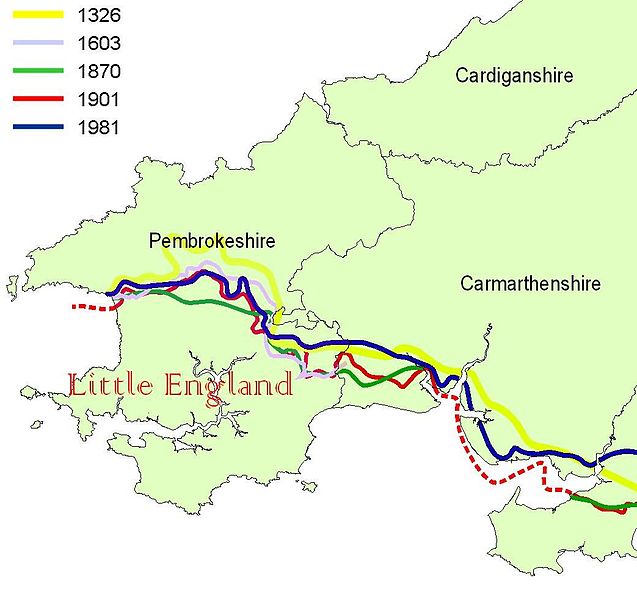Advertisement
If you have a new account but are having problems posting or verifying your account, please email us on hello@boards.ie for help. Thanks :)
Hello all! Please ensure that you are posting a new thread or question in the appropriate forum. The Feedback forum is overwhelmed with questions that are having to be moved elsewhere. If you need help to verify your account contact hello@boards.ie
French spoken in Ireland??
Options
Comments
-
-
-
-
-
-
Advertisement
-
-
-
-
-
-
Advertisement
-
-
-
-
-
-
Advertisement

 Bands of Norsemen marauded the Pembrokeshire coasts from the middle of the ninth century onward and plundered the cathedral at St David's on eight or more occasions. They left only their names on the offshore islands and on a few coastal settlements, like Angle and Goultrop and Dale in the south, and Fishguard in the north. The Normans lost no time in invading south Wales once its powerful prince, Rhys ap Tewdwr, was killed in 1093. Roger de Montgomery, Earl of Shrewsbury, and his son, Arnulf, swept across Wales to Pembroke. Arnulf later joined his brother,
Bands of Norsemen marauded the Pembrokeshire coasts from the middle of the ninth century onward and plundered the cathedral at St David's on eight or more occasions. They left only their names on the offshore islands and on a few coastal settlements, like Angle and Goultrop and Dale in the south, and Fishguard in the north. The Normans lost no time in invading south Wales once its powerful prince, Rhys ap Tewdwr, was killed in 1093. Roger de Montgomery, Earl of Shrewsbury, and his son, Arnulf, swept across Wales to Pembroke. Arnulf later joined his brother,  Robert, in revolt against the king, Henry I, and was banished, and Pembroke became a royal lordship with Gerald de Windsor as its custodian.
Robert, in revolt against the king, Henry I, and was banished, and Pembroke became a royal lordship with Gerald de Windsor as its custodian.